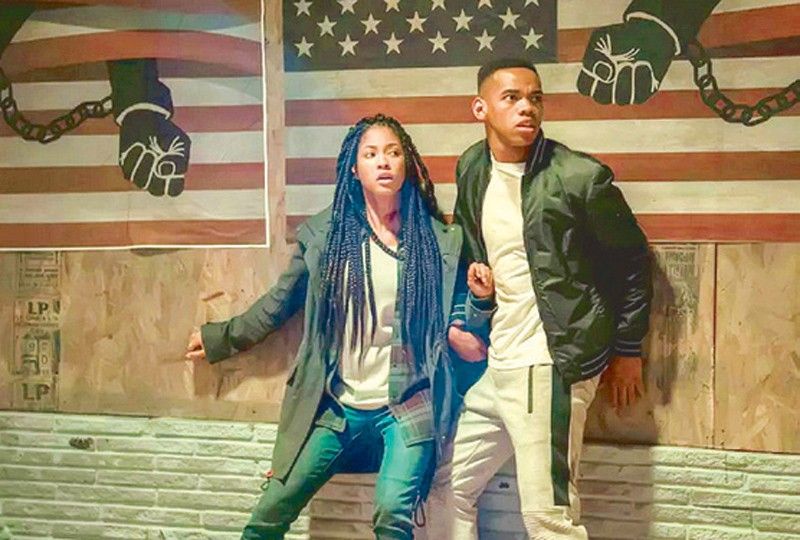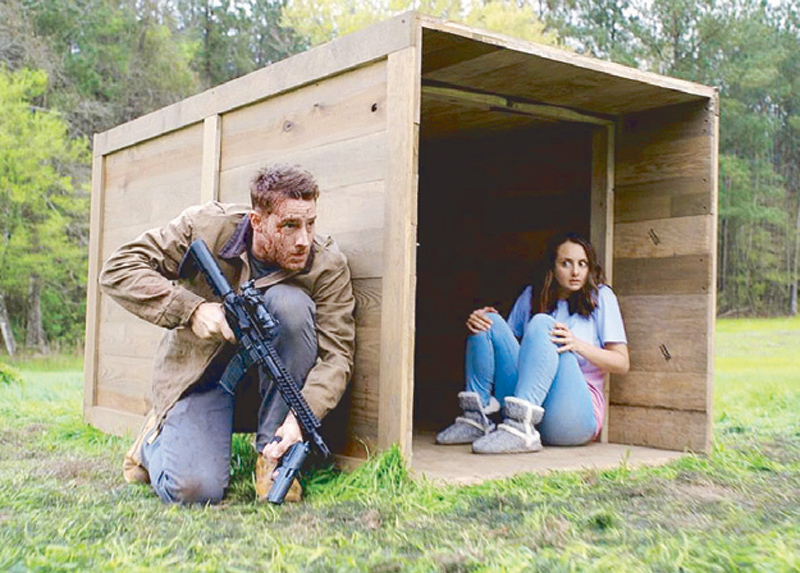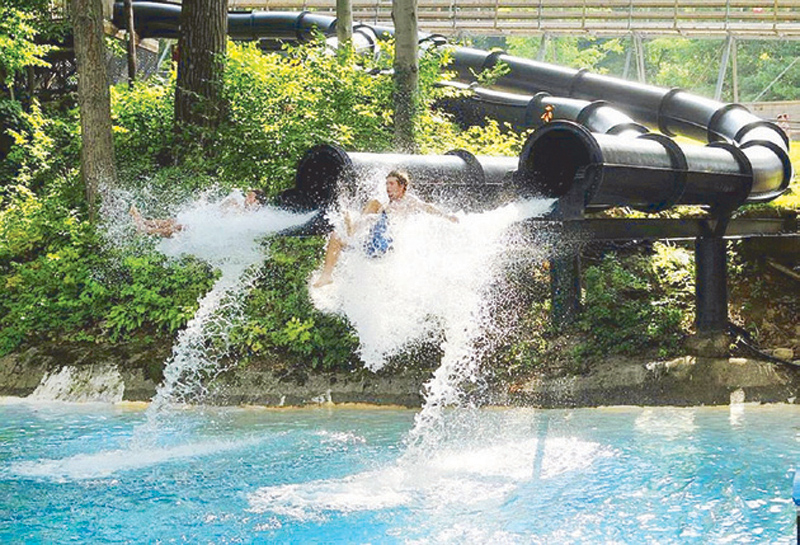'American carnage at the movies'

Does it seem like protests on American streets are starting to resemble the hyped-up chaos, rioting and vigilantism of The First Purge, the latest entry in the exploitation movie franchise (now showing on Netflix)? Or do you get the sense there’s a vast Democrat/Hollywood conspiracy of elites trying to keep the “deplorables” down, as graphically depicted in the sadistic 2019 political fantasy The Hunt?
Where would one get that idea? Well, possibly from the American president, who structured most of the recent Republican National Convention around the idea that American urban centers are fiery hellscapes that could only be saved by Donald Trump.

That’s the same president who refused to dismiss the QAnon conspiracy theory about Democrats running pedophile rings and drinking children’s blood, because, he said, the ones disseminating such wacky beliefs are “people that like me.”
Both The First Purge (from 2018) and The Hunt (release delayed in 2019 due to US school shootings but also because, well, it’s just not very good) try to take on the furiously divided political landscape of America — where, no lie, people can’t even get together for Thanksgiving turkey without yelling at one another over the cranberry sauce — but both fail miserably to capture how fractured and volatile things really seem right now.
Indeed, the Republican convention did a better job of scaring a certain demographic of American voters than any Purge movie or film about hunting down MAGA types ever could.
And, as you might expect, both movies are highly exploitative of real-life issues, both are reductive of those issues in precisely the ways you’d imagine them to be, and both seem badly dated since the arrival of COVID.
And yet both pander to actual divisions within American society — the “American carnage” that the current US president promised to end on Day One of his term in office. Well, all we see now is protests over the shooting of unarmed Black people, mixed with images of burning cars, smashed buildings, and caravans of MAGA voters on the backs of pickup trucks, deploying paint guns and pepper spray to make things even more volatile between Americans. And, predictably, people are being shot dead. On both sides.
There’s a president who has no vested interest in cooling down such situations (he prefers the “gasoline on the fire” approach to civil unrest). And a crazy train of tail-wagging-dog tweets and outbursts that no Hollywood screenwriters could ever keep up with.

Reality always has the distinct advantage of being real, and the problem with movies that try to reflect these dystopian times is that they’re always a couple of news cycles out of date.
The First Purge may seem like a veiled political commentary on these all-too-real times, but it punches way below its weight. It’s more like Blaxploitation minus the style and flair, which just leaves exploitation, and it definitely plays off headline loops of urban violence without exploring any particular issues very deeply. The Black characters situated within Staten Island low-income housing during a “psychological experiment” conducted by the US government are given facile human depth, but the explosions of violence are sensationalistic, exploitative and, yeah, racist.
You know the drill: the government is conducting a horrific social experiment, paying people in poor urban centers $5,000 to participate in a one-night free-for-all killing spree. They can either try to escape getting killed, or earn a bit more if they’re willing to gun down other folks themselves. Akin to George Orwell’s “Two Minutes Hate,” the idea is that venting man’s lower impulses in a “controlled” environment for a single night once a year will somehow benefit the human race. But The First Purge actually plays into all the racial stereotypes peddled on Fox news about urban violence, even as it presents a few characters who see past the basest urges around them and seek a way out.
Makes you wonder who the intended audience was for this 2018 prequel.
On the other hand, The Hunt is bad from the get-go, a sick fantasy about rich creeps who look down on MAGA voters (you can easily spot them, they’re the ones wearing denim, flannel and baseball hats), enough so that they’ve built an elaborate hunting ground called Manorgate. There, they drug and transport these scruffy, lower-class types and release them into the wild. They’re given their own weapons — but the evil rich liberals have superior weapons at their disposal.
?The Hunt panders and condescends to a certain demographic — people who watch Blumhouse Productions schlock on a regular basis, presumably — while pretending to paint them in more sympathetic colors. Some of “the deplorables” are better, wiser, more evolved than others, and they see through the social experiment, just as some do in The First Purge.
It also slyly plays into the vast undercurrent of conspiratorial thinking in American society, practically linking The Manor members to QAnon beliefs. You know: those smarty-pants liberals are all the same, keeping kids prisoner in pizza parlors, drinking their blood, etc. ?But it’s just as exploitative, just as sick, just as geared towards using the existing issues and tensions of society to simply sell movie tickets. (It didn’t sell much at the box office, though. So there is some kind of justice.)
The problem with both movies, as I’ve mentioned, is that reality doesn’t give a hoot about any tepid brain farts cooked up by coked-up Hollywood screenwriters. It marches on like a crazy virus. And when you have a commander-in-chief who’s a one-man chaos generator, who needs bad scripts?
Finally, we take a trip to Vernon, New Jersey, where HBO Max uncovers the most dangerous amusement park in America in Class Action Park. It’s a strange saga of Eugene Mulvihill, a man with a dream to turn a winter ski park into a summer escape (called Action Park, but soon nicknamed “Traction Park” and “Class Action Park”) where young Jersey teens could line up to drink beer, shoot themselves down a mountain along a concrete-reinforced bobsled track (one kid cracked his head on some rocks and died), barrel through loop-di-loop water slides that ended up costing them teeth, or drive go-carts at hazardous speeds of 60 mph, ending up on the adjacent highway.
What was the attraction of an amusement park where you could die? Call it an American yearning, the type of risk-friendly “live free or die” lifestyle that led to shows like Jackass and electing a carnival barker as president.
Opened in the 1980s, Action Park was the stuff of urban legend (all of it true). Teens arrived in droves to visit the beer tent, get in fights on the Colorado River Ride, fire enflamed tennis balls at one another on the Battle Action Tanks, and possibly drown in the Tidal Wave Pool. In fact, some five people died in Action Park before it finally gave up fighting lawsuits in 1996. It was a park so dangerous that even Mulvihill’s Wall Street pal at the time, a young Donald Trump, took a pass on investing in it.
Apparently, his aversion to risk has lessened since then.















